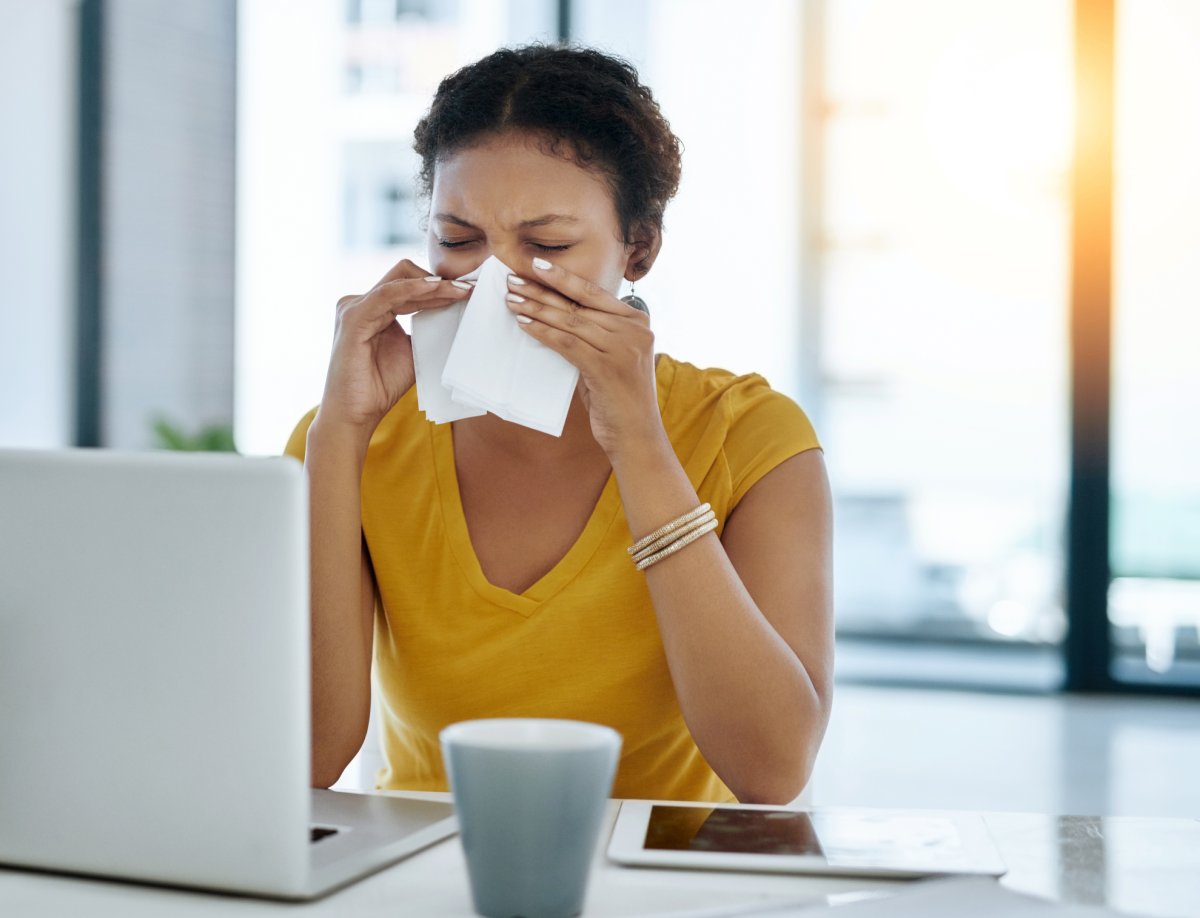Canada is in the dead of a nasty flu season, and that means germs abound at full-force.

The number of Influenza B cases jumped 52 per cent in the week of Dec. 31 to Jan. 6 from the week before, according to the Government of Canada’s weekly influenza report. Germs are moving fast.
READ MORE: Reality check: Houseflies are loaded with bacteria, but can they make you sick?
“At any given time the human body is emitting anywhere from one to tens of millions of microbes every hour,” Canadian microbiologist Jason Tetro says. “Normally that’s not a problem – however, if you happen to be sick then that microbial cloud starts to incorporate a number of these pathogens that you happen to be infected with.”
Those pathogens, Tetro says, land on people and surfaces and end up posing a risk.
“That poses a risk because you’re not going to get sick by picking up somebody’s skin or hair bacteria from a keyboard, but you may get sick if you happen to pick up dry droplets from someone who had the cough or flu,” he says.
And those droplets can end up on what are called “high touch surfaces.”
These are surfaces that have a higher likelihood of leading to infection, Tetro says. That likelihood essentially comes down to the number of times something is touched.
Flu germs (and cold germs for that matter) live on surfaces between two to eight hours at a time. The higher the number of high-touch surfaces you come into contact with everyday, the greater your chances of picking up those germs.
So what are some of those high touch surfaces?
- Water coolers, taps and water fountains
- Photo copiers and printers in offices
- Bathroom surfaces
- Door handles
- Soap dispensers that require pumping
- Subway poles
- Mobile devices
- Keyboards
- Flight check-in kiosks at airports
- Shopping carts
When it comes to soap dispensers, Tetro explains that microbes actually have the potential to get inside the bottle and into the soap. This is due to people touching the underside of the dispenser, which is commonly done when people check to see if there is soap in the dispenser or if soap is coming out.
READ MORE: Your gym equipment is covered in bacteria – but can it make you sick?
“It’s not that big of a deal when it comes to the flu necessarily, but sometimes it can be a problem for some other bugs that could potentially lead to secondary infections,” Tetro says.
A few years ago Tetro conducted a study at the Montreal airport to find the surfaces with the most germs. According to Tetro, the worst surface for germs was actually the fight check-in kiosks where boarding passed are dispensed.
And any shopping carts that are not taken outside can also harbor plenty of flu and other germs, Tetro says.
“Any shopping carts that are not taken outside will continually be contaminated and grow, or at least support viral life,” he says.
So what should you do if you come into contact with these surfaces and want to avoid getting sick?
Washing your hands is obviously important – but your best friend, Tetro says, is going to be an alcohol-based hand rub that has an ethanol percentage of between 62 and 70 per cent.
And did you know humans touch their face 16 times an hour on average? By touching your face after you’ve touched surface, you’re putting yourself at risk of infection – so avoid touching your face, Tetro says.







Comments